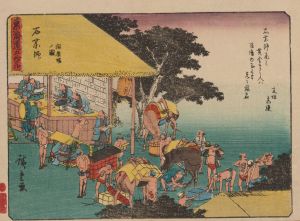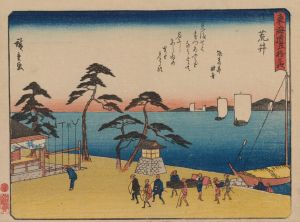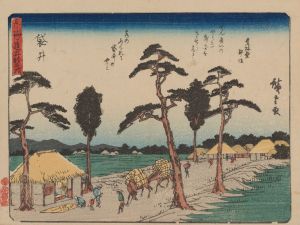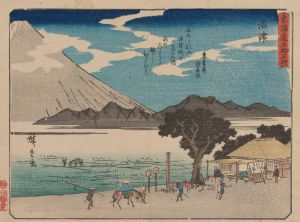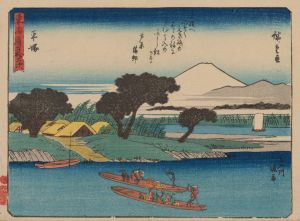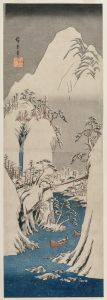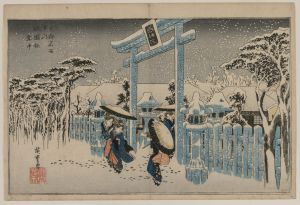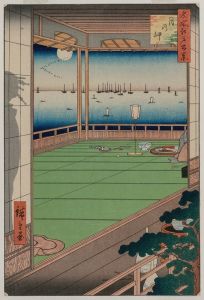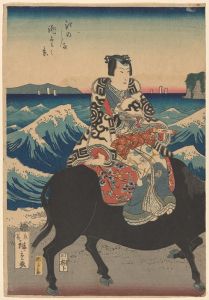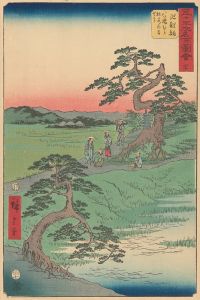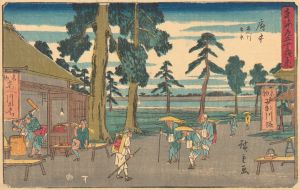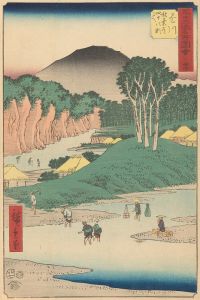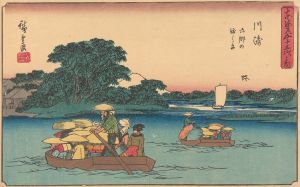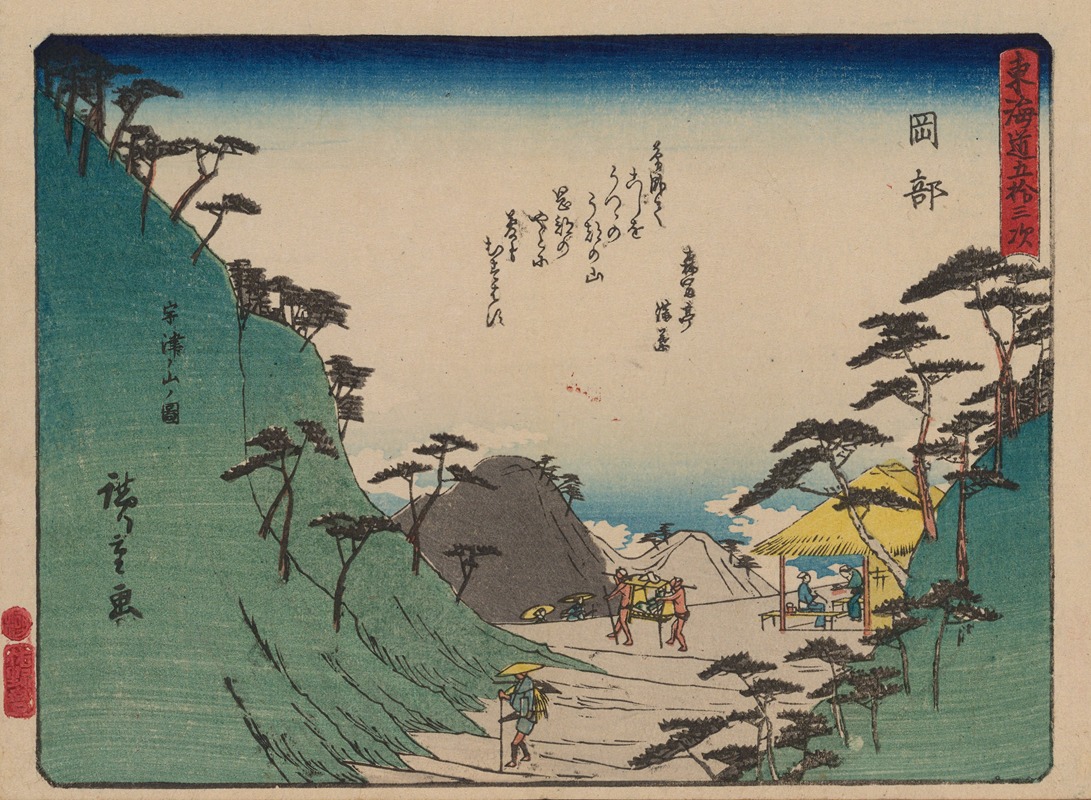
Tokaido gojusantsugi, Pl.22
A hand-painted replica of Andō Hiroshige’s masterpiece Tokaido gojusantsugi, Pl.22, meticulously crafted by professional artists to capture the true essence of the original. Each piece is created with museum-quality canvas and rare mineral pigments, carefully painted by experienced artists with delicate brushstrokes and rich, layered colors to perfectly recreate the texture of the original artwork. Unlike machine-printed reproductions, this hand-painted version brings the painting to life, infused with the artist’s emotions and skill in every stroke. Whether for personal collection or home decoration, it instantly elevates the artistic atmosphere of any space.
Andō Hiroshige, a renowned Japanese ukiyo-e artist of the Edo period, is celebrated for his landscape prints and depictions of the Tōkaidō, a vital coastal route connecting Edo (modern-day Tokyo) to Kyoto. Among his most famous works is the series "The Fifty-three Stations of the Tōkaidō" (Tōkaidō Gojūsan-tsugi), which captures the scenic beauty and cultural significance of this historic road. Plate 22 of this series is one of the many prints that showcase Hiroshige's masterful ability to blend natural landscapes with human activity.
The Tōkaidō road was the most important of the Five Routes of the Edo period, serving as a major artery for travel and trade. Hiroshige's series, created after his journey along this route in the early 1830s, offers a vivid portrayal of the various post stations where travelers could rest and resupply. Each print in the series highlights a specific station, capturing the unique characteristics and atmosphere of the location.
Plate 22 specifically depicts the Fujieda station, one of the fifty-three stations along the Tōkaidō. In this print, Hiroshige illustrates the daily life and interactions of travelers and locals, set against the backdrop of the natural environment. The composition typically features a harmonious blend of human figures, architectural elements, and the surrounding landscape, reflecting the interconnectedness of people and nature.
Hiroshige's use of color and perspective in this print is notable. He employs a range of blues and greens to convey the lushness of the landscape, while the figures are often depicted in motion, suggesting the constant flow of travel and commerce along the Tōkaidō. The perspective draws the viewer's eye into the scene, creating a sense of depth and inviting them to explore the details of the composition.
The "Fifty-three Stations of the Tōkaidō" series, including Plate 22, was highly influential in both Japan and abroad. It not only provided a visual record of the Tōkaidō road but also contributed to the popularity of landscape prints in the ukiyo-e tradition. Hiroshige's work inspired many Western artists, including the Impressionists, who admired his innovative use of color and composition.
Hiroshige's prints are characterized by their attention to detail and ability to capture the transient beauty of the natural world. Plate 22 of the Tōkaidō series exemplifies these qualities, offering a glimpse into the vibrant life along one of Japan's most important historical routes. Through his art, Hiroshige invites viewers to appreciate the harmony between humans and their environment, a theme that resonates with audiences even today.





